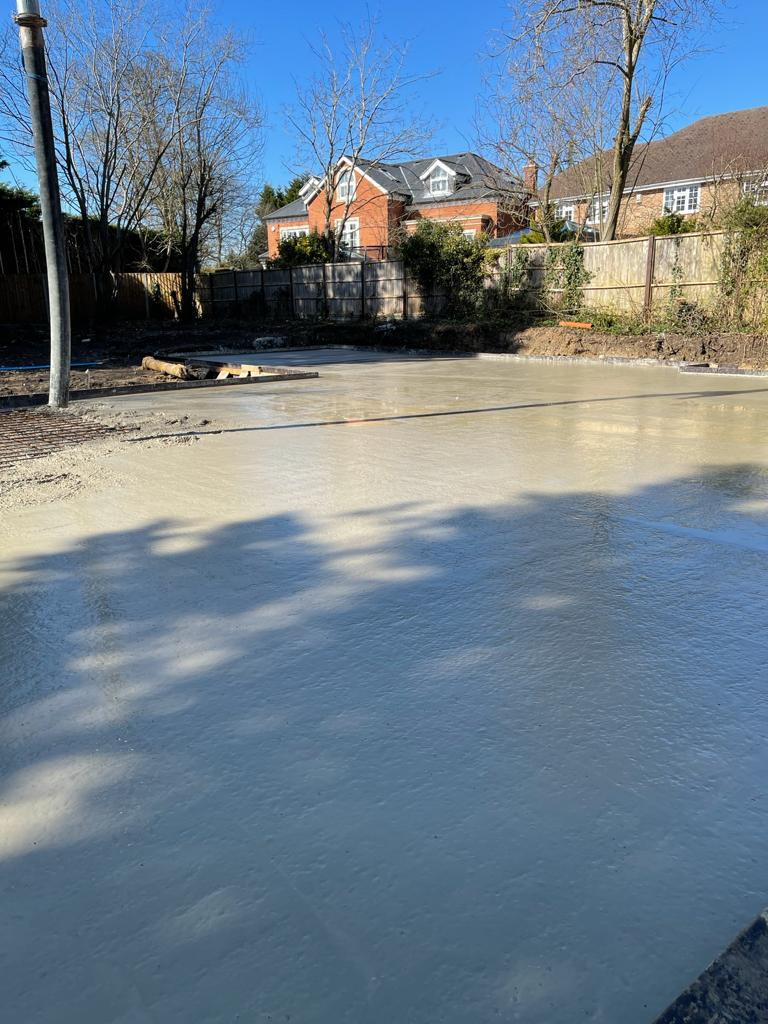When to use Reinforced Concrete?
August 12, 2024

Structural Elements
When it comes to structural elements subjected to stresses, such as beams, columns, and slabs, it is essential to ensure they are properly reinforced. This is crucial to guarantee their ability to bear the loads imposed upon them safely. However, for our discussion, let us focus on concrete bases.
Slabs and Driveways
Reinforcement is generally considered beneficial in concrete construction, and reinforcement, particularly fibers, is standard among ground workers. In the vast majority of circumstances, the introduction of reinforcement is advisable, as it can have a positive impact on the concrete's performance.
Fibers are typically incorporated into the concrete mix during the mixing stage and have minimal effect on pouring or laying the concrete. This reinforcement method is often the preferred choice for ground workers, as it provides a convenient and effective way to enhance the concrete's properties without significantly altering the construction process.
It is rare to encounter situations where reinforcement could harm a concrete base. In most cases, the benefits of incorporating reinforcement, such as improved strength, durability, and crack resistance, outweigh any potential drawbacks. Therefore, reinforcement, particularly fibers, is generally considered a prudent and widely adopted practice in concrete construction.
Cost of materials
The cost of reinforcement can vary depending on the materials utilized and the required reinforcement for the project. Generally, fiber reinforcement will increase the cost of ready-mixed concrete by approximately 10%—a modest price to pay for the product's benefits.
The selection and quantity of reinforcement materials can significantly impact the overall cost of a construction project. Fiber reinforcement, in particular, has been shown to enhance the performance and durability of concrete, often justifying the relatively minor increase in material expenses. When planning a project, it is essential to carefully consider the tradeoffs between cost and the long-term advantages offered by different reinforcement options.
Proper Installation
Improper installation of reinforcement can compromise the structural integrity of concrete. Rebar and mesh require proper support to ensure complete encapsulation by the concrete; otherwise, potential failure or cracking of the concrete may occur in the future if the steel begins to swell due to rusting. In contrast, using fiber can be considered an additive to the concrete mix without the associated risks.
Conclusion
Reinforced concrete presents many advantages that render it the material of choice for numerous construction endeavors. The augmented tensile strength, enhanced load-bearing capabilities, and improved durability of reinforced concrete are well-established. However, the judicious selection of materials and meticulous installation are paramount to optimizing these benefits.
Whether constructing a modest garden shed or laying a driveway, comprehending the appropriate utilization of reinforced concrete can significantly impact the project's longevity, safety, and overall success. Therefore, when engaged in a concrete-based undertaking, it is prudent to consider the potential advantages of reinforcement. In all likelihood, the incorporation of reinforcement will prove advantageous.